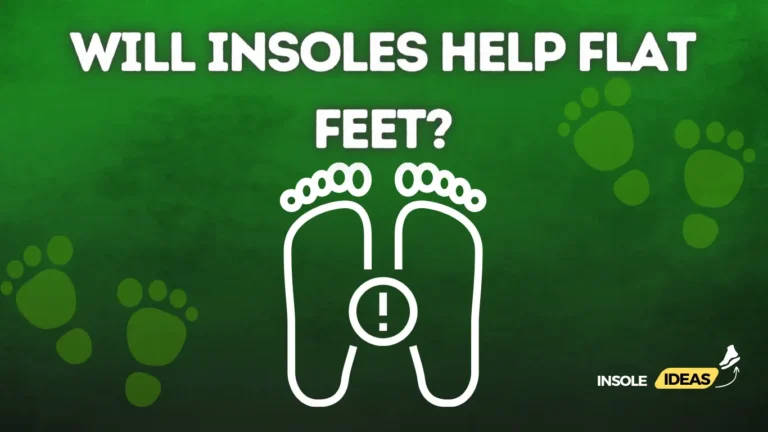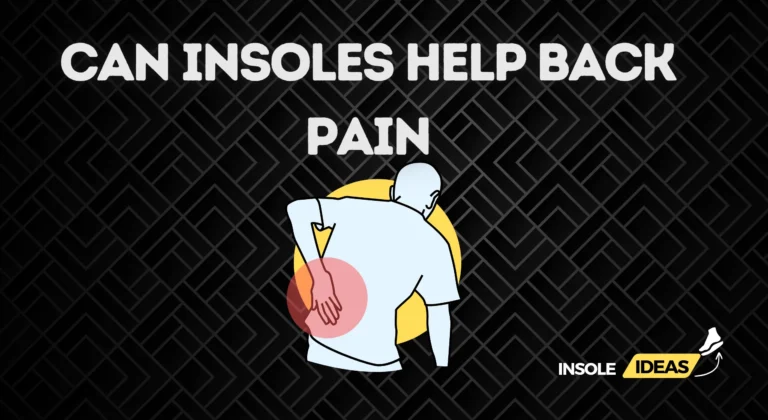Are Insoles Good for Running? A Comprehensive Guide
Proper footwear is a crucial aspect of a runner’s gear, impacting performance, comfort, and injury prevention. One often overlooked component is insoles. These inserts, designed to enhance support and comfort inside the shoe, raise a significant question for runners: Are insoles beneficial? In this comprehensive guide, we’ll delve into the importance of proper footwear, explore the potential benefits of using insoles for running, and understand the keywords “insoles for running” and “benefits of insoles.”
The Importance of Proper Footwear in Running
Running places immense stress on the feet and lower limbs, making the right footwear indispensable. Ill-fitting shoes or those lacking proper support can lead to discomfort, pain, and even injuries. Investing in quality running shoes is a fundamental step towards a successful running journey.
Understanding Foot Mechanics
Before exploring insoles, it’s crucial to comprehend the mechanics of the foot during running. Each foots trike involves a complex interplay of bones, muscles, and tendons. The right shoes support the natural arch and pronation of the foot, ensuring optimal biomechanics and minimizing the risk of injuries.
Are Insoles the Missing Piece?
Runners often wonder whether insoles can enhance the benefits provided by their running shoes. In certain cases, generic insoles may offer some added cushioning, but for many individuals, custom or specialized insoles can address specific biomechanical issues, providing tailored support that generic shoes may lack.
Benefits of Insoles for Running
Insoles for running can offer a range of benefits, contributing to improved comfort, performance, and injury prevention. Let’s explore these advantages in detail.
Enhanced Cushioning and Comfort
Quality insoles provide additional cushioning, absorbing shock during each foots trike. This enhanced comfort can be particularly beneficial for runners with conditions like plantar fasciitis or those logging long miles.
Improved Arch Support
Many runners face challenges related to arch support. Insoles can be customized to provide the right level of support, aiding individuals with high or low arches in maintaining proper foot alignment during running.
Addressing Pronation Issues
Runners experiencing overpronation or supination can benefit from insoles designed to address these specific concerns. These inserts help stabilize the foot and promote a more neutral gait, reducing the risk of injuries associated with improper pronation.
Injury Prevention and Longevity
By offering tailored support and correcting biomechanical issues, insoles contribute to injury prevention. Runners who prioritize foot health are likely to experience longevity in their running pursuits, enjoying an active lifestyle without frequent setbacks.
The Significance of Foot Support in Running
Running is a high-impact activity that places considerable stress on the feet and lower limbs. It is impossible to exaggerate the importance of foot support for improving running comfort, avoiding injuries, and improving performance. In this exploration of foot support, we’ll first dive into the intricate mechanics of running and its direct impact on the feet. Understanding running biomechanics will be our main emphasis, and the terms “foot mechanics in running” and “running biomechanics” will be important to remember.
Understanding Foot Mechanics
Running involves a complex interplay of bones, muscles, tendons, and joints in the feet. The biomechanics of running include the gait cycle, foots trike pattern, and pronation. The gait cycle, consisting of the stance and swing phases, dictates how the foot makes contact with the ground and propels the body forward.
The Impact of Foots trike Pattern
The foots trike pattern, whether heel, midfoot, or forefoot, influences how forces are distributed through the foot. Each pattern has its implications for shock absorption and energy transfer. Understanding one’s natural foots trike is crucial in selecting footwear that complements and supports that pattern.
Pronation: Finding the Right Balance
During the gait cycle, pronation—the inward rolling of the foot—is a normal and essential action. On the other hand, overpronation or its reverse, supination, can cause imbalances and raise the possibility of injury. Proper support aims to maintain a neutral alignment, preventing overpronation or supination.
Importance of Proper Support for Reducing the Risk of Injuries
Proper foot support plays a pivotal role in mitigating the risk of running-related injuries. Inadequate support can lead to issues such as plantar fasciitis, shin splints, and stress fractures. Addressing biomechanical factors through appropriate footwear and, in some cases, custom insoles can significantly contribute to injury prevention.
The Role of Arch Support
One key aspect of foot support is providing the right level of arch support. Individuals with high arches may benefit from added cushioning, while those with low arches require support to prevent excessive pronation. Customizing support based on arch type is essential for injury prevention.
Shock Absorption and Impact Reduction
Running’s repetitive impact may be harmful to muscles and joints. Sufficient cushioning and support in shoes helps absorb stress, which lessens the strain on the lower limbs and feet. This becomes more and more crucial while running lengthy distances.
Individualized Solutions for Optimal Support
Recognizing that each runner has unique biomechanics, preferences, and foot shapes, the quest for proper support involves individualized solutions. Getting a professional gait analysis and consulting with experts can guide runners in selecting footwear that aligns with their specific needs.
Common Running Foot Problems
Runners frequently encounter a variety of foot-related issues that can impact their performance and well-being. Pronation, supination, and arch problems are among the common culprits that disrupt the natural biomechanics of the feet during running. Understanding these problems is crucial, as they often necessitate additional support to address and mitigate their effects. This discussion delves into the keywords “common running foot problems” and “foot issues in runners.”
Exploring the Benefits of Insoles
Improved Shock Absorption
Insoles play a vital role in enhancing shock absorption during running. Insoles add another layer of cushioning as the feet hit the ground repeatedly, lessening the impact forces that are transferred through the body. This not only enhances comfort but also serves as a critical component in preventing injuries related to the repetitive stress of running.
Reducing Stress on Joints
The improved shock absorption provided by insoles translates into reduced stress on joints. Ankles, knees, and hips bear less force during each foots trike, minimizing the risk of overuse injuries. Runners, particularly those prone to conditions like shin splints or stress fractures, can benefit significantly from the added protection offered by insoles.
Enhanced Stability and Alignment
Insoles contribute to improved foot stability and alignment, key factors in optimizing running performance. By providing additional support, insoles help correct imbalances related to pronation or supination, promoting a more neutral and efficient gait.
Impact on Gait and Overall Performance
The enhanced stability and alignment facilitated by insoles positively impact the runner’s gait. A stable foundation encourages a smoother, more controlled stride, reducing the likelihood of compensatory movements that can lead to fatigue and injuries. Ultimately, the cumulative effect is an improvement in overall running performance.
Customization for Individual Needs
Insoles come in various designs, with some offering customization options to cater to individual needs. This personalization extends to accommodating specific foot types and catering to unique running styles, ensuring that each runner receives tailored support.
Addressing Specific Foot Types
Runners may address particular foot types, such high arches or flat feet, using customizable insoles. This adaptability ensures that the insoles provide the right level of support for the individual’s unique biomechanics, reducing the risk of discomfort or injury.
Tailoring Support to Running Styles
Runners with different styles, whether long-distance or sprinting, can benefit from insoles that cater to their specific demands. Customization options enable users to fine-tune support based on their running preferences, promoting a more enjoyable and effective running experience.
In conclusion, the benefits of insoles extend beyond simple comfort, encompassing improved shock absorption, enhanced stability, and customization for individual needs. Understanding how insoles address these aspects sheds light on their integral role in promoting a healthy and enjoyable running experience.
Choosing the Right Insoles for Your Running Needs
Selecting the right insoles for your running shoes is a crucial step in enhancing comfort, performance, and injury prevention. This guide will explore two key considerations: the consideration of foot type and the importance of material and durability in insole selection. The primary keywords for these sections are “choosing insoles for foot type” and “durable insoles for running.”
Consideration of Foot Type
Guiding readers on determining their foot type is an essential aspect of choosing the right insoles. Understanding the natural arch of the foot – whether it’s high, low, or neutral – is critical for selecting insoles that provide the appropriate level of support. Here’s a detailed breakdown of this consideration:
Guide readers on determining their foot type.
Readers can start by performing a simple wet test at home. Step onto a sheet of paper after moistening the bottom of your foot, then look for the impression. High arches typically show a narrow, curved footprint, while flat feet leave a wider impression. Alternatively, seeking professional advice or using foot analysis tools can provide accurate insights into your foot type.
Match specific insoles to different foot arches and shapes.
Once the foot type is determined, matching it with the right insoles is the next step. High arches benefit from insoles with added arch support to distribute pressure more evenly. Flat feet may require insoles with increased stability and motion control. Neutral arches generally find comfort in insoles that offer balanced support.
Material and Durability
The material of the insoles is another critical factor that directly impacts comfort and longevity. This section delves into the importance of material in insole selection, considering factors like breathability, moisture-wicking, and overall durability.
Discuss the importance of material in insole selection.
The material of the insoles plays a significant role in determining their effectiveness. Breathable materials, which assist control moisture and temperature, including mesh or perforated foams, lessen the chance of blisters and discomfort during extended runs. Moisture-wicking properties are crucial for keeping feet dry, especially in hot or humid conditions.
Factors like breathability, moisture-wicking, and longevity.
When selecting insoles, consider the climatic conditions you’ll be running in. Breathable fabrics encourage ventilation, which keeps feet cool, while moisture-wicking qualities extract perspiration from the skin. Additionally, durable materials ensure that the insoles withstand the rigors of regular running, providing long-lasting support.
Conclusion
In conclusion, choosing the right insoles for your running needs involves a thoughtful consideration of foot type and an understanding of the importance of material and durability. By matching insoles to specific foot arches and selecting materials that prioritize breathability and longevity, runners can enhance their overall running experience. The benefits extend beyond comfort to improved performance and reduced risk of injuries, making insoles a valuable investment for every runner.
FAQs
A: Applying insoles can improve support and comfort during jogging. To decide if insoles are helpful, take into account your foot type and any particular requirements, including cushioning or arch support.
A: It is true that the right insoles may minimize the risk of injury when running and increase performance by reducing impact, improving stability, and easing soreness.
A: Select insoles with the right amount of shock absorption, moisture wicking, and arch support. Particularly useful are insoles that are customized or semi-customized to fit the specific anatomy of your foot.
A: Adding insoles may provide your running shoes the support they need and improve your running experience if they are uncomfortable, don’t provide enough support, or you have certain foot problems.
A: Although they are not a guarantee, the correct insoles can help lower the chance of injury by offering sufficient alignment, cushioning, and support during running. Check your shoes for symptoms of wear and tear on a regular basis.
A variety of insoles are available to accommodate different running patterns, including supination, overpronation, and neutral. For the best support, select insoles that complement your gait and running biomechanics.
A: When insoles start to show wear, or every 300–500 miles, replace them. To guarantee constant support and comfort throughout your runs, evaluate the state of your insoles on a regular basis.



